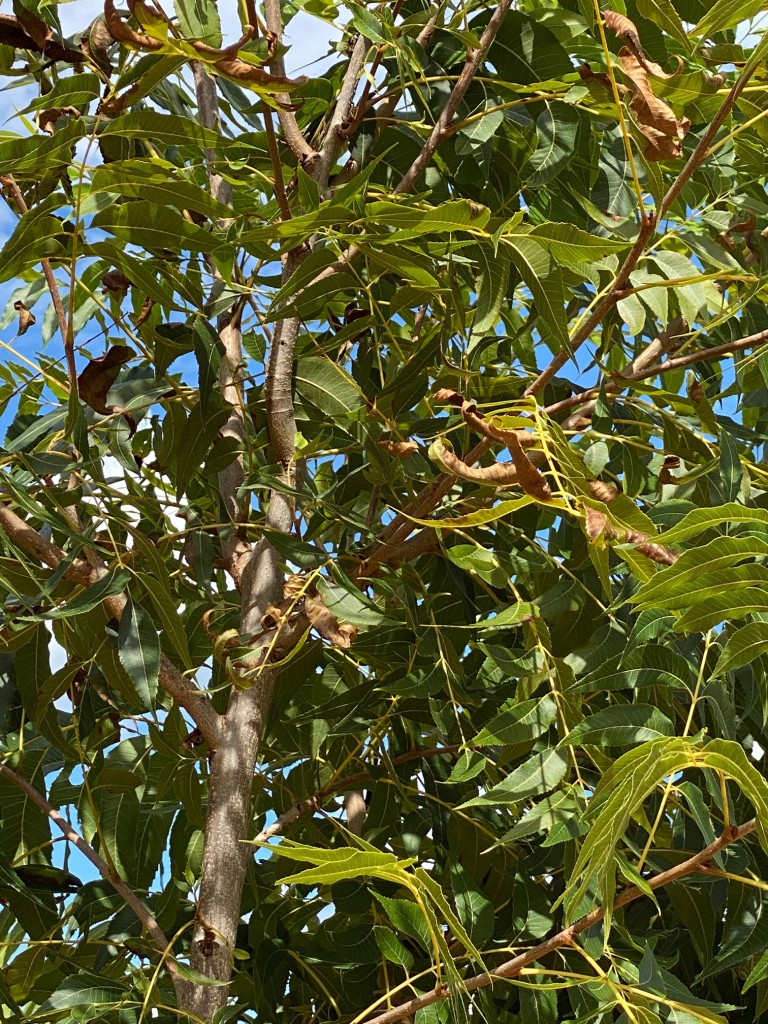The problem of the week last week was scorched leaves. I had calls from all over the state on this on multiple varieties but most commonly on young (5 yr and younger) Pawnees.

Many things can cause leaf scorch, including a hot chemical mix, anthracnose, mites, fertilizer burn, etc. But often, its the result of something affecting the root or vascular system.
In profile the pecan root system looks like an inverted pyramid, with the taproot extending ten feet or more in deep topsoils. It will generally grow until it reaches some type of impediment like a water table or hardpan. The role of the taproot is to anchor the tree in the ground and store carbohydrates. The lateral roots growing all along the taproot start out long and slender and are initially used for absorption of water and nutrients. As they mature, they shift roles to tree support and storage of carbs. As they branch and turn in the soil, they provide slack for the tree’s shifting in the wind. It is the small, fibrous or feeder roots that do much of the heavy lifting regarding movement of water and nutrients to trees in commercial orchards.
Pecan roots grow most profusely in areas of soil in which conditions are most favorable. In most managed orchards this will be at a depth of 12-18” below the soil surface. This is the zone at which lateral roots and fibrous roots are most dense. Fibrous roots or feeder roots actually grow toward the soil surface in search of water and nutrients. This is why it is so important to manage irrigation (especially on young trees) so that the soil moisture remains consistent rather than fluctuating between wet and dry.
There are 4-8 cycles of root growth throughout the year, demonstrating that root growth and function can be significantly impacted by the conditions in which they grow. In heavy clay or wet soils, you will have fewer fibrous roots developing. Root growth begins in spring before shoot growth begins, usually as soil temperatures reach 60-65 degrees at about 6”. They grow very rapidly as the temperature warms from 60-86 degrees, and slows thereafter. Root growth may occur anytime the air temperature is from 32-100 degrees. Lateral roots and fibrous roots are very sensitive to heat and soil moisture. When you see air temperatures around 100 degrees, many shallow roots begin to die. Soil temperatures are generally about 5 degrees warmer than air temperatures down to at least 5″. This is why we so often see that scorching on the leaves of young trees when temperatures get up into the high 90s and 100s as we’ve seen over the last couple weeks.
Its natural for the trees to lose a few feeder roots, which will regrow when conditions are more favorable. Commercially managed trees get dependent on these fragile feeder roots, especially in young, vigorously growing trees and when they are suddenly no longer there to pick up water for the tree, it shocks the tree and you get scorching. However, there should be no long-term damage and the trees will grow out of this as the canopies fill in and shade the root zone as the tree grows.
